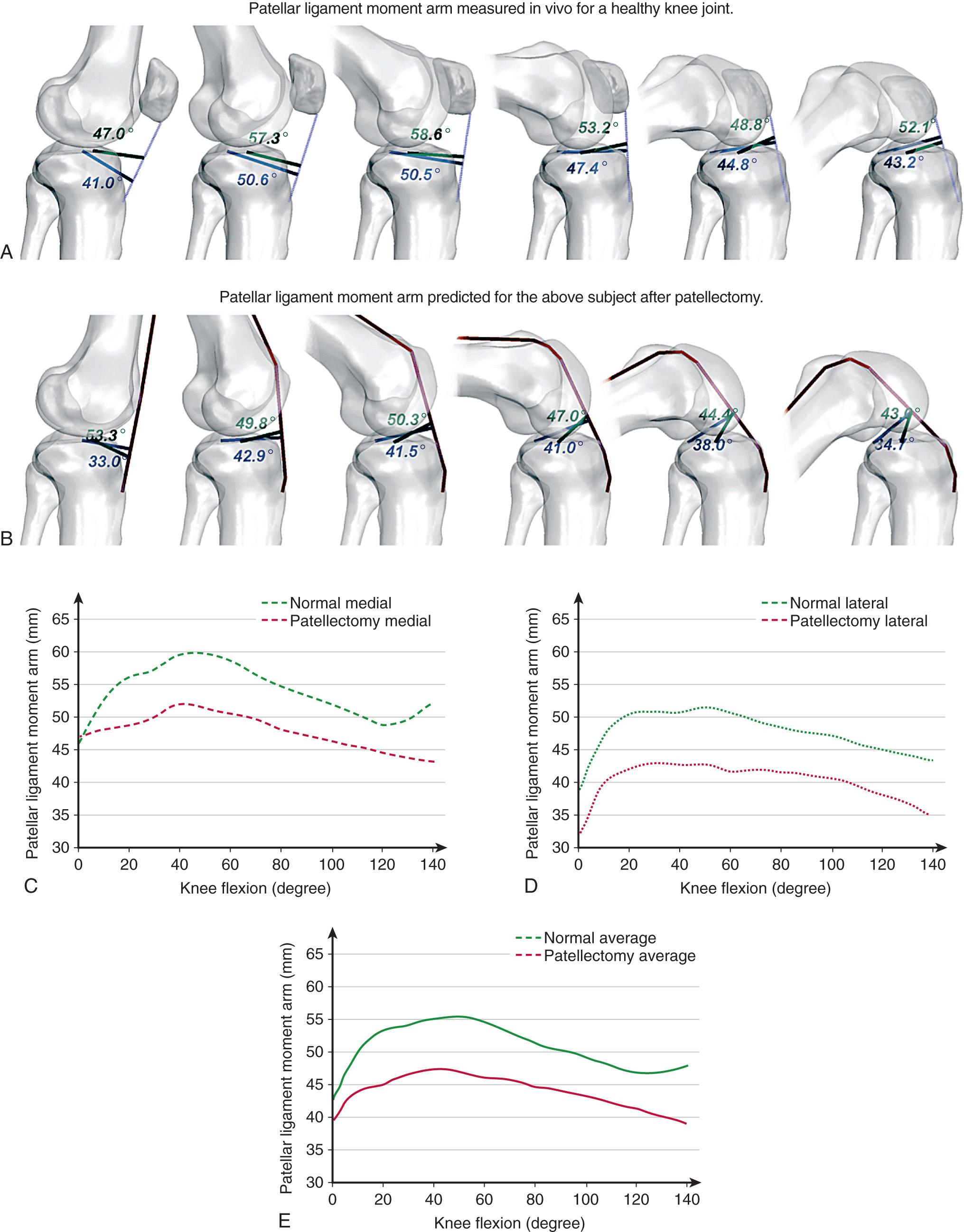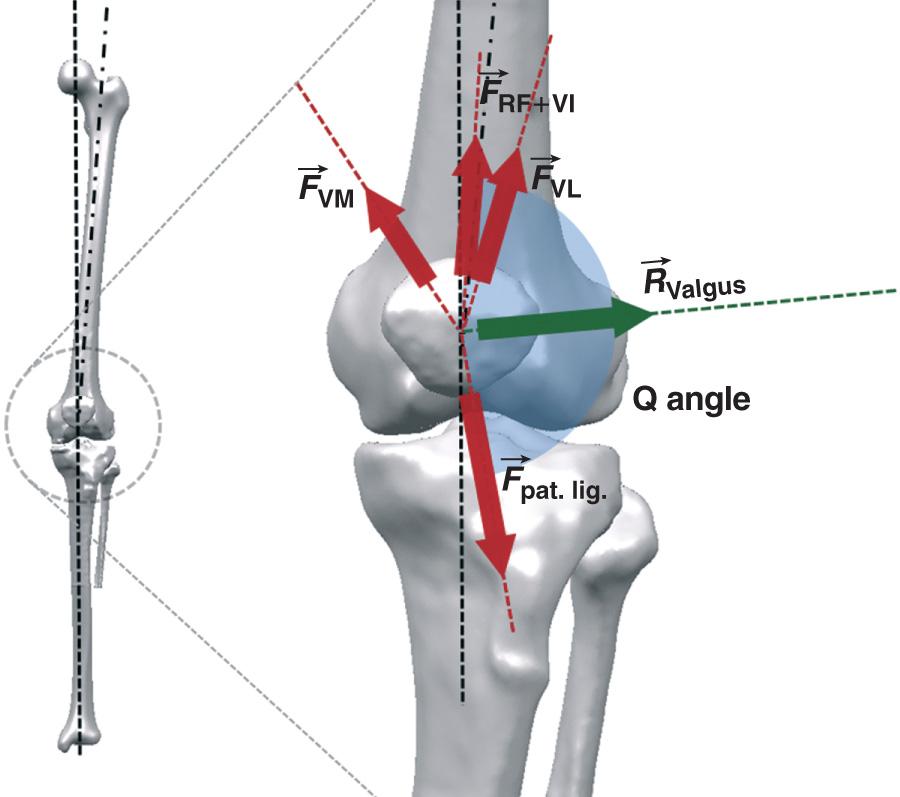Physical Address
304 North Cardinal St.
Dorchester Center, MA 02124
The patellofemoral joint is an integral aspect of the knee that enhances flexion and extension. Any disturbance in the joint, such as injury, muscle weakness, and congenital or developmental abnormalities, can greatly affect the overall functionality of the joint and inherently decrease the effectiveness of one's ability to flex and extend the lower leg. Patellofemoral disorders are often difficult to diagnose and may be related to kinematics, kinetics, or soft tissue deficiency. Given its anatomy as a sesamoid bone attached at its superior pole to the quadriceps tendon and at its inferior pole to the patellar ligament, the patella can experience and withstand remarkably high contact and joint reaction forces. These high forces coupled with small overall contact areas result in high stresses and pressures in the joint. One can imagine that such an environment can lead to complications. Patellofemoral pain (PFP) is one of the most common knee problems, and because of vague patient explanations and the large quantity of variables associated with the patellofemoral joint, it is often unclear what the cause of pain is. Beyond common PFP the mechanical nature of this joint lends itself to difficult surgical decisions regarding joint replacement and resurfacing techniques in the case of debilitating arthritis in the knee. Establishing a thorough understanding of the kinematics associated with healthy, pain-ridden, and implanted patellae will shed light on these decisions and provide one with the means to more adequately administer clinical treatment.
The importance of the patella was documented as early as 1789, when John Sheldon explained “muscles extend the leg by pulling up the Patella , which plays in the groove between the two condyles of the Os Femoris , as a rope in a pulley, and therefore these muscles… act with great mechanical advantage; they not only extend the leg, but assist, likewise in keeping the thigh-bone fixed upon the Tibia in the erect posture; in balancing the body; and in straightening the knee-joint.” In 1937 the importance of the patella was challenged when Brooke concluded “the patella serves no important function in man” and that the performance of the knee could be improved via patellectomy. Although this was accepted by some at the time, research has proven the removal of the patella impairs the extensor mechanism by decreasing the moment arm. After patellectomy the extensor mechanism moment arm decreases by 14% ( Fig. 18.1 ), and Kaufer demonstrated that the extensor mechanism's power is reduced by at least 15%. Such a reduction in kinetic efficiency may explain why patellectomy patients experience difficulty extending the knee fully. Therefore preservation of the patella is now recommended whenever possible.

Understanding the kinematics of the patella and the factors that drive these can advance biomechanical modeling, joint implant design, and clinical treatment of joint pathology. The motion of the patella is primarily described with respect to its corresponding articulating body, the femur. The articulating portion of the native patella is completely covered by the thickest articular cartilage in the human body (4 to 6 mm at its central portion). This cartilage is aneural, which allows the joint to bear high compressive loads, up to 12.9 times body weight (×BW). The elastic nature of the articular cartilage allows the resulting high stresses to be distributed within the cartilage and thus protects the richly innervated subchondral bone by ensuring the pain threshold is not exceeded. The cartilage properties coupled with the synovial fluid lubrication of the knee capsule allow the patella to transmit high forces in an essentially frictionless manner. As a sesamoid bone encapsulated within the extensor mechanism, the patella is free to rotate and translate in three dimensions, providing six degrees of freedom. Thus as it travels through the femoral trochlea, it rotates and translates as needed to optimize the effect of the quadriceps and to guide the extensor mechanism, thus preventing dislocation of the extensor apparatus. In addition, the patella acts as an anterior constraint for the femur, effectively preventing subluxation with respect to the tibia.
To investigate the kinematics further, it is important to define the anatomy and physiology associated with the joint. Various shapes on the native femur may be associated with patellofemoral kinematics. These include the lateral trochlear inclination (LTI), the sulcus angle, articular cartilage depth (ACD), the sulcus groove length, the trochlear bump, trochlear groove width, and trochlear depth. Aside from the osseous features and constraints, the patella kinematics are dictated by the quadriceps tendon, the medial and lateral retinaculum, and the patellar ligament. Because the quadriceps tendon and patellar ligament effectively connect at the patella, it is sensible to define the relationship between the two anatomic structures in the form of a physical variable. This variable is referred to as the Q angle, which is specifically the angle between the quadriceps' line of pull and the patellar tendon ( Fig. 18.2 ). Because anatomically the quadriceps line of action is superolateral, the quadriceps creates a line of pull with an outward directed horizontal component when contracted (see Fig. 18.2 ). Anatomic factors, including a more anterior projection of the lateral condyle compared with the medial condyle (quantified by the LTI) and more distally reaching fibers of the vastus medialis compared with those of the vastus lateralis, offset the lateral pull of the quadriceps.

Malpositioning of total knee arthroplasty (TKA) components is a frequent cause of patellar maltracking, which is traditionally remedied via a lateral retinacular release. Specifically internal rotation of the femur, internal rotation of the tibia, overstuffing (increasing overall thickness of the composite patella) of the patella, and lateralization of the patellar component on the native patella can promote maltracking, which most commonly manifests itself in the form of lateral patellar subluxation. Some have shown that patellar maltracking can occur regardless of component position. Patient variability demands decisions be made based on intraoperative evaluation.
Modifying the joint line during TKA may also affect patellar kinematics because normal knee kinematics require a correct interrelationship between the bony anatomy and the surrounding soft tissue. Elevation of the joint line in revision TKA often occurs because of distal femoral bone loss, undersizing the femoral component, and overstuffing the tibiofemoral gap. Pseudo-patella baja (because of joint line elevation as opposed to a change in the length of the patellar tendon) can lead to patellotibial impingement in deep flexion, a decreased moment arm, a decreased range of motion, increased midflexion instability, and anterior knee pain. It has also been reported that increasing the joint line elevation will cause tibiofemoral and patellofemoral contact forces to increase considerably. Overloading of the patellofemoral joint can increase the risk of patellar degeneration and can increase the risk of failure for implanted components. Because of such factors, restoration of the joint line is recommended whenever possible.
Become a Clinical Tree membership for Full access and enjoy Unlimited articles
If you are a member. Log in here